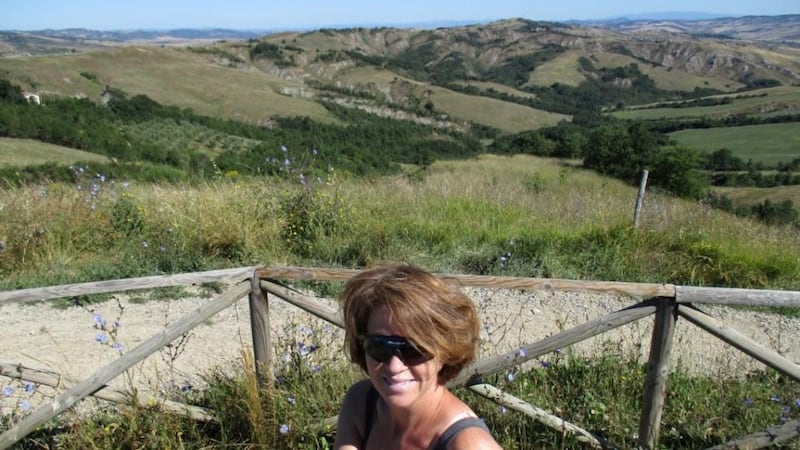The fiercest heat of the day was fading as we climbed the last 2km to the perched Tuscan town of San Miniato Alto, grateful for the fresh evening breeze. Pressing a bell set into the russet brickwork of the Convento di San Francesco we unclipped our packs and slumped, scorched and stinking, against the wall. Fast footsteps on a tiled floor, a scraping of heavy bolts, then the smiling face of a tall man in the doorway, speaking loudly into a mobile phone, gesturing to us to step inside.
We were walking the final 500km of the Via Francigena, the 1,700km pilgrim route from Canterbury to Vatican City. We’d plotted a series of nightly stops in small Italian towns and villages between Massa-Carrara and Rome, each roughly 25km apart, planning to stay in convents and monasteries that had been giving food and shelter to weary pilgrims since the Middle Ages.
In breakneck Italian, the man at the door introduced himself as Brother Franco and informed us that cena pellegrini would be served in the refectory in 20 minutes. He led us down a long, cool passage, up a marble staircase into a high corridor, doors on both sides, one of which he pushed open, waving us in.

From our cell we listened as his footfall faded, heard the reedy tone of his mobile, his energetic “Pronto!” in the distance, before silence was reclaimed. We’d showered, changed and were hobbling downstairs by the time the gong sounded.
That evening, in the huge vaulted dining room with Franco, two other pilgrims and a miraculously self-replenishing jug of cold red wine, we ladled thin, salty soup into shallow bowls from a silver tureen, followed by plates of roasted chicken and a deliciously intense caponata. Franco watched us eat, barely touching his own plate, fiddling with his Winnie the Pooh mobile phone cover, topping up our glasses and talking without pause. Meal over, dirty plates stacked on an ancient, trembling dumbwaiter, our friendly friar eagerly produced a clip-top bottle of lethal fennel liqueur "fatta dalle suore". "Made by the nuns," he announced, mischievously.
In that same room at dawn, our stamped credenziale, a neat list of useful numbers on a scrap of paper and two small, carved wooden crosses on leather threads lay next to two thermos flasks, one filled with steaming black coffee, the other with hot milk. Our fellow pilgrims were long gone, leaving tiny, tidy piles of scrunched paper wrappers; bloated biscotti crumbs floating in the bottom of white breakfast bowls.
We found a similarly warm welcome in a variety of religious houses all the way to Rome: the bare mattresses and rough blankets of a parish hostel in Camaiore; a sunny, top-floor apartment above the ambulance service HQ run by hi-viz volunteers in Lucca; a dark dormitory shared with snoring Italian cyclists in St Quirico D’Orcia; the Monasterio Regina Pacis outside Vetralla, where Sister Justina, a beneficent Congolese novice in full habit was the serene-faced representative of an otherwise completely closed order.
Three days from Rome, we were picked up in the centre of the Etruscan town of Sutri and driven to the Oasi di Pace, a Franciscan convent run by Sorella Renata, a formidable Mother Superior and her ten obedient Filipino nuns. The rooms were spotless, the food, including delicately battered aubergine slices and basil ice cream, exquisite.
As we were leaving the next morning, Mother Superior handed us bottles of heavenly, ice-cold water. “Here”, she said a half smile on her lips, an eyebrow slightly arched, “cold and freshly blessed. Buon cammino”.
[ Irish Times Amateur Travel Writer CompetitionOpens in new window ]









